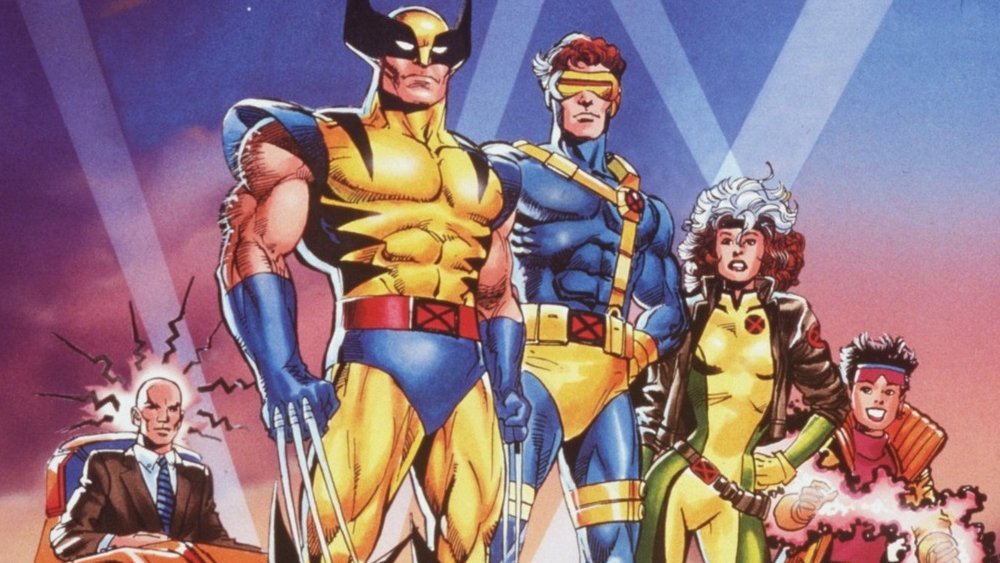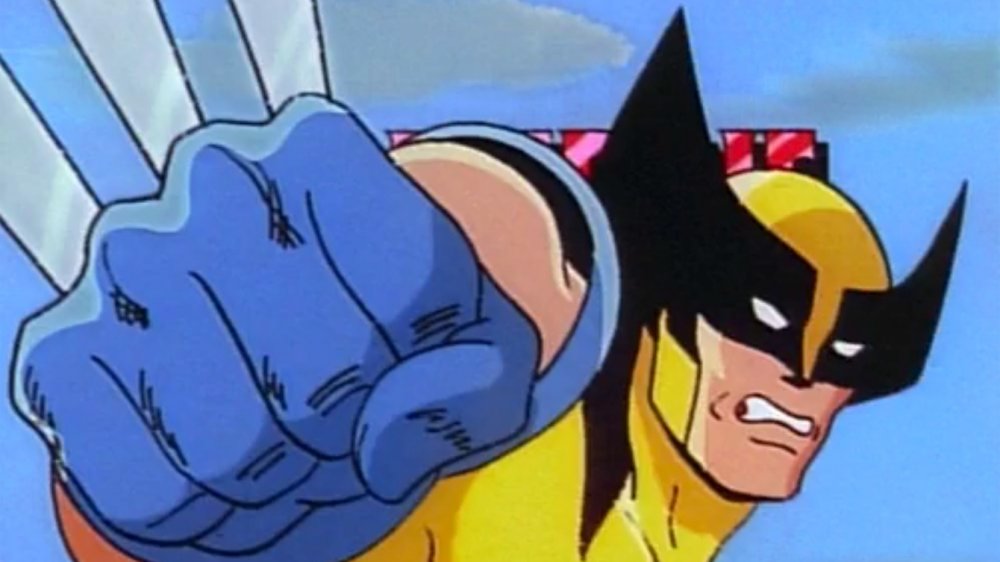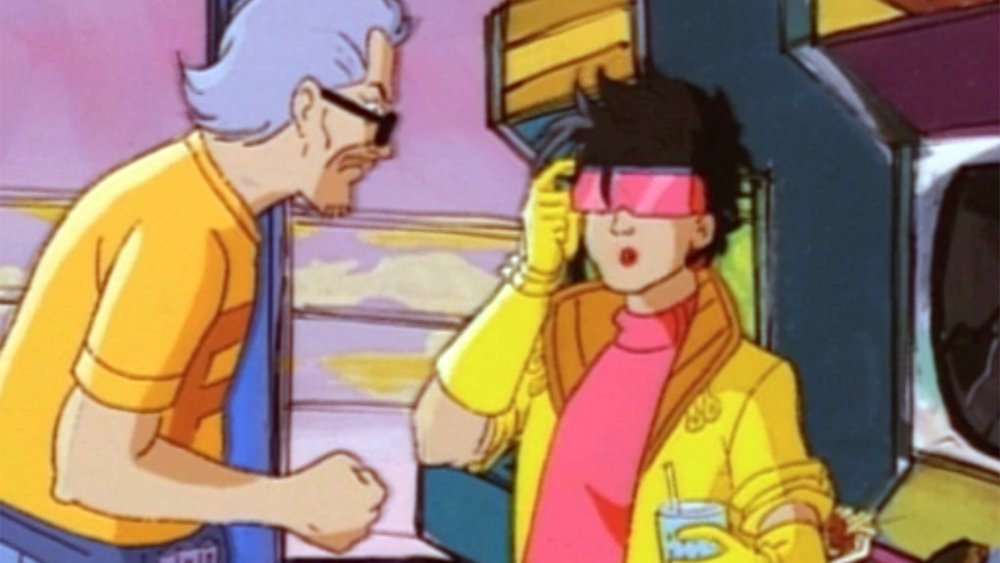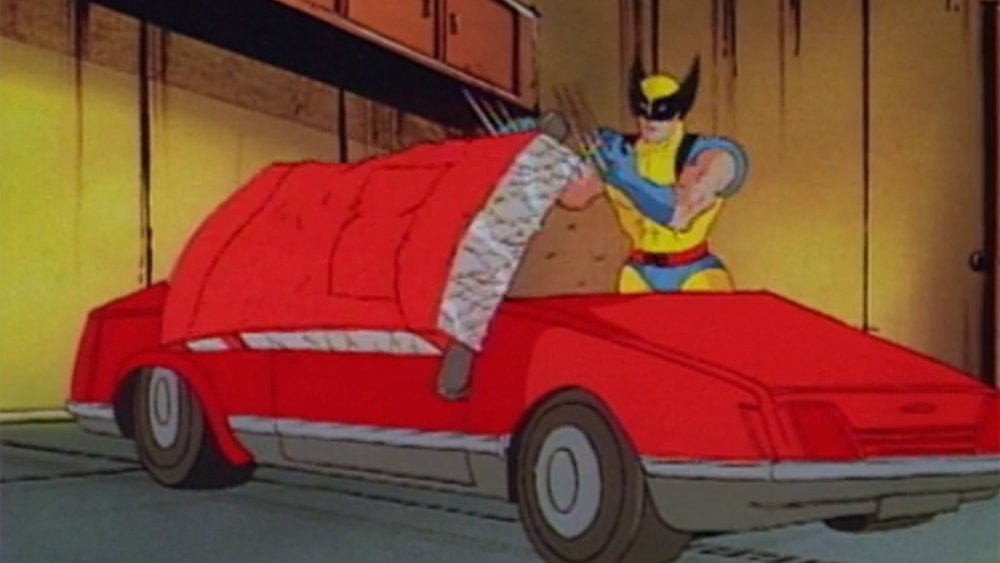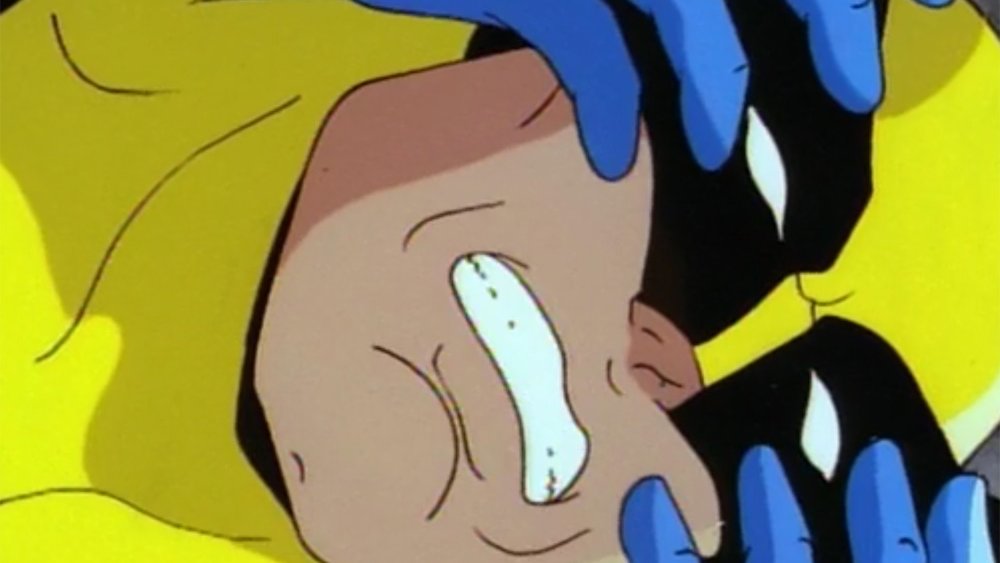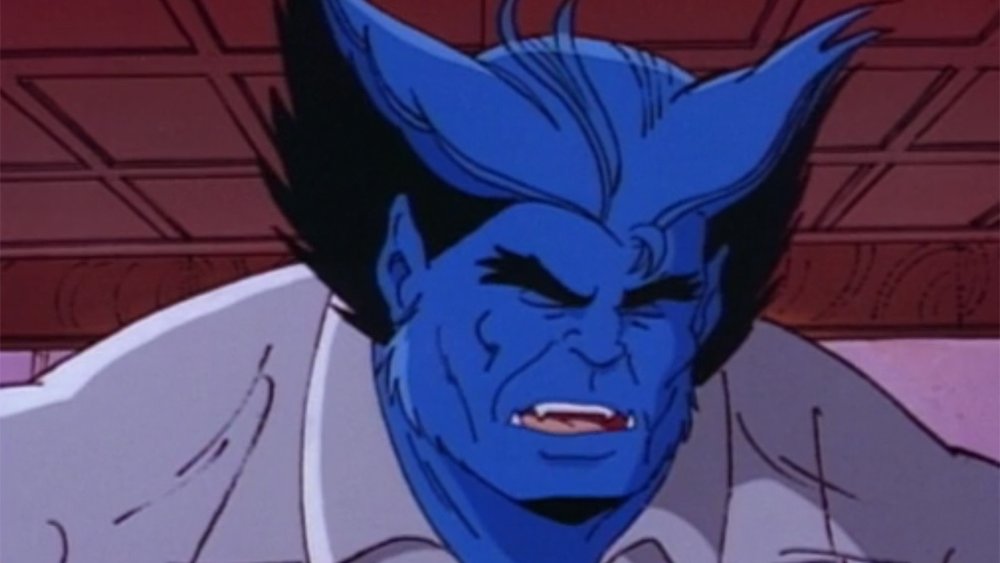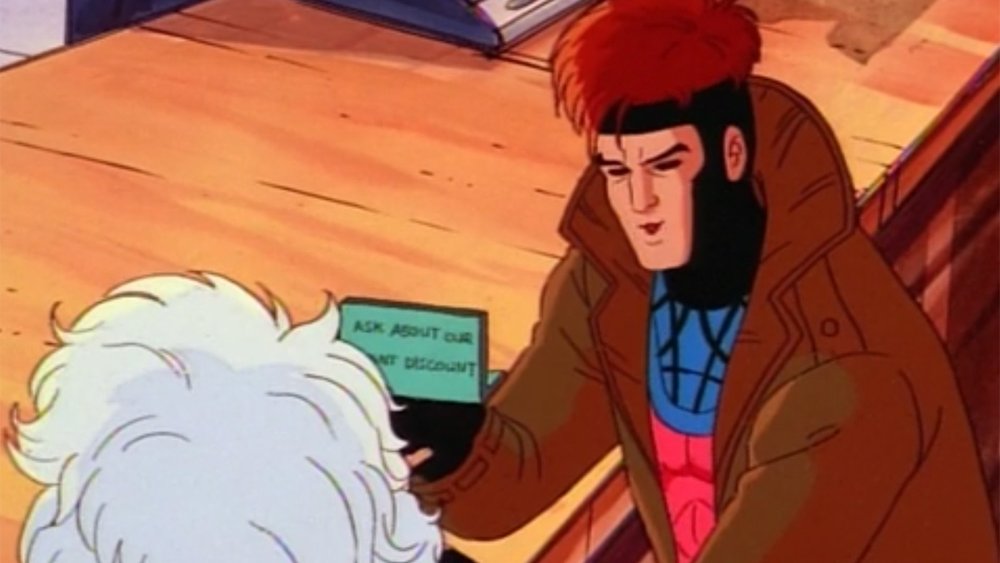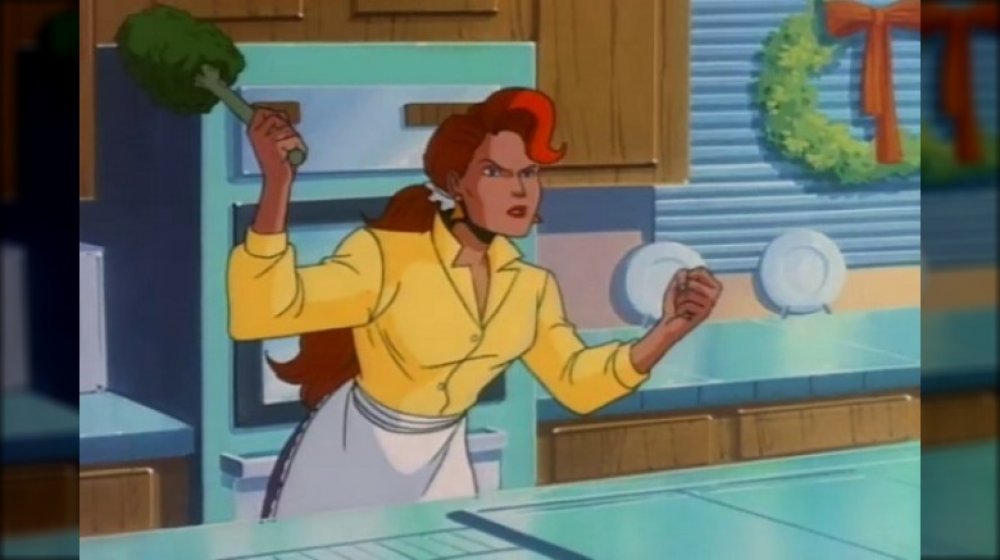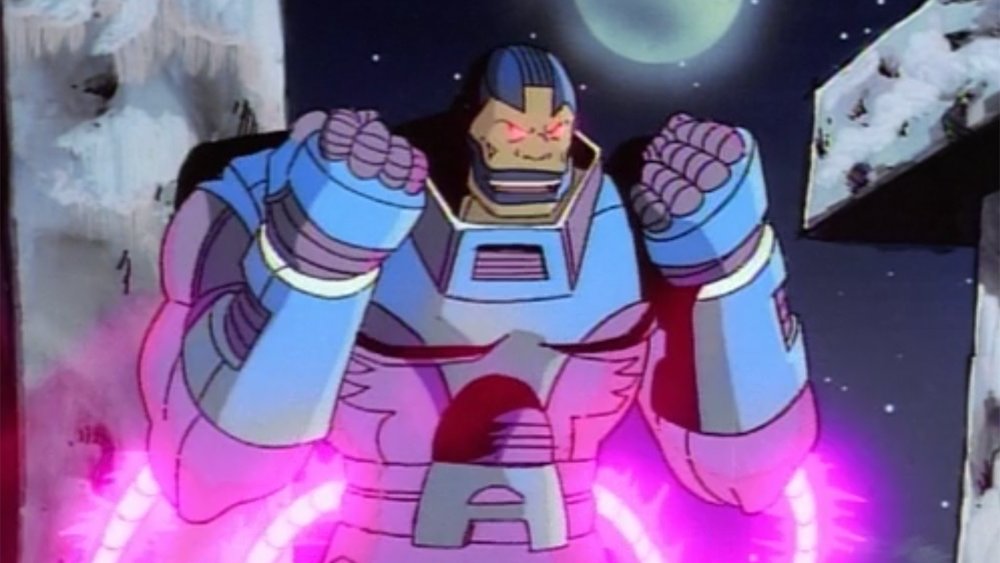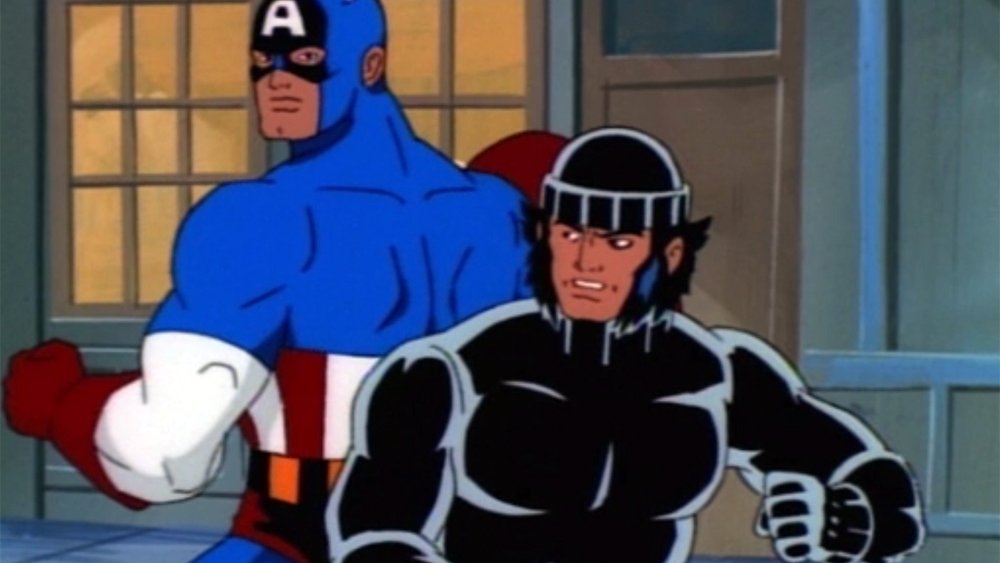The Best Moments From X-Men: The Animated Series
In the early '90s, the X-Men were quite possibly the most popular thing in the entire world. They had tie-ins with everything from canned pasta to acne medication, a smash hit line of action figures, and of course, comic books that were selling in the millions. On October 31, 1992, however, Marvel's misfit mutants reached the absolute high point of their success with the launch of X-Men: The Animated Series.
For an entire generation of fans, this was the definitive version of the team, and it's easy to see why. Unlike later versions of the group to hit screens, X-Men was a direct translation of the aesthetic of the comics, with faithful adaptations of iconic stories like the "Dark Phoenix Saga." Well, as faithful as they could be with a show that wasn't allowed to show anyone dying or getting punched, that is, but that extra layer of weirdness is part of what makes the show so fun. If you're gearing up for a rewatch now that the whole series is available on Disney+, here are the best moments to watch out for.
X-Men: The Animated Series has a truly epic theme song
Ask literally anyone what the most memorable part of the 1992 X-Men cartoon is, and 100 percent of them will tell you it's the theme song. In fact, you could just bring up the X-Men in general, and there's a good chance that before too long, someone in that conversation is going to start up with a "duh-nah-nah-nah nah nah nah!"
And there's a reason for that. The theme song rules. It's unquestionably one of the most memorable TV themes in history, especially if it hit you at an impressionable age where you were just starting to form your opinions about music. We don't have the scientific data to back this up, but we'd guess that the X-Men theme was at least part of the reason that heavy guitars made a comeback once all the young fans of the show grew up. Then again, that would mean blaming the X-Men for the existence of Limp Bizkit, and it's a short step from there to demanding that we start building Sentinels.
The radness of the theme all comes down to Ron Wasserman, who composed and performed the classic instrumental and probably shaped your childhood musical tastes in ways you didn't even realize. Under the name "The Mighty RAW," he also wrote and performed the theme for Mighty Morphin Power Rangers. According to Wasserman, he was shown a clip from the show, told that his song should have the word "go" in it, and then wrote a song in which "go" and "Power Rangers" are basically — if not entirely — the only words. For X-Men, one assumes that he was just told it was a show about people with knives for hands, concussive force blasts that shot out of their faces, the power to make anything explode, and to write a song that rocked as hard as that deserved.
No quarter asked ... and none given
Once the actual story gets started, it doesn't take long for X-Men to start delivering some of its most iconic moments. The two-part pilot, "Night of the Sentinels," is absolutely full of them, which is one of the reasons why it makes such a great introduction to the characters. There's something memorable and exciting every few minutes in that show, from character introductions to signature lines, and that's a good thing. If you got "Night of the Sentinels" on a VHS tape from Pizza Hut back in the day (kids, ask your parents), then you were going to be watching it roughly one million times in the summer of '93, and it's nice to have something quotable to memorize in its entirety.
About three minutes into the show, we catch up with Jubilee, a young mutant who would serve as our viewpoint character for most of the series. After learning that the government has dispatched giant robots to round up mutants, she does what most of us do when we're confronted with overwhelmingly horrible news — she goes and plays some video games. In her case, it's the arcade at the mall, and unfortunately, she runs into a problem.
Jubilee's mutant power is mostly related to shooting pyrotechnic sparks out of her hands, but one of its more inconvenient side effects is that she tends to accidentally make electronics explode when she gets a little too emotional. When this happens at the arcade, the manager gets understandably angry, asking her, "Do you know how much that game costs?" "Yeah," she replies, lowering her shades. "A quarter." At the time, this was the most brutally savage dunk that had ever happened on television.
One of the best Wolverine moments of all time
The first actual mission that the X-Men go on in the series doesn't exactly go well. While the team does manage to destroy the government's database of mutant identities and rescue Jubilee from Henry Gyrich, it's not without a cost. The shape-shifting X-Man called Morph is apparently killed in action by the Sentinels, which probably came as a big shock to the viewers who didn't realize he'd been created for the show and was just there to die so that they could have drama without killing off any of the main characters.
Sadly, Wolverine didn't get the memo. He takes it especially hard, and he levels the blame squarely on Cyclops for leaving Morph behind to die, which earns ol' Scott Summers a punch in the gut from everyone's favorite Canadian (non-Carly Rae Jepsen division). When their physical fight is broken up by Jean Grey, Wolverine decides to take out his anger on Cyclops in another way. Before heading out to drown his sorrows in a local biker bar full of dudes who are suspiciously eager to fight a guy with razor-sharp adamantium claws, Wolverine warms up by slashing said claws into the roof of Cyke's boxy, early '90s sports car.
In a pretty impressive display of thoroughness, he cuts through the entire frame, shoving everything above the doors — roof, windshield, and all — to the floor. Once again, Jean tries to intervene, but Wolverine offers up a line that hits the signature X-Men sweet spot of being equal parts hilariously goofy and totally badass: "Tell Cyclops ... I made him a convertible!"
Covered with scorpions!
The X-Men are arguably the greatest ensemble in the history of superhero comics, with a roster of characters that are compelling and well-crafted in their own right, and also Cyclops is there. They work best as a team, playing off of each other and cultivating those soap operatic connections that form the addictive drama at the heart of the team. But really, let's be honest with each other. Wolverine's been the breakout star for about 40 years now, ever since he popped up out of the sewer and told the Hellfire Club that they'd taken their best shot, and now ... it's my turn.
And really, he should be. He's got claws that can cut through anything, cool powers that let him take a beating from the Hulk and keep getting up to fight, and a mysterious past revealed over the course of decades. He's a superhero and a secret agent and a samurai and a berserker, and he has a secret identity that he uses to run a bar in Madripoor, and he knows Captain America. Even by X-Men standards, that's a lot, but it also means there's something for everyone to like. And it also means that every now and then, you have to take him down a peg.
Case in point? The show's fifth episode, "Captive Hearts." In addition to being the episode with the famous scene of Wolverine lying in bed and pawing at a framed picture of Scott and Jean, it's also the one where the team faces off against the Morlocks, an underground gang of mutants rejected by society for their appearances. Like, literally underground. They live in the sewers and subway tunnels. Beating up the homeless might not seem like something that would require the attention of the Marvel Universe's premiere mutant superhero team, but it turns out that the Morlocoks are more formidable than that description might suggest.
So when Wolverine tries to fight Annalee, who literally looks like someone's kindly grandmother, she casts a telepathic illusion that makes Wolverine think that he is, as she says "covered with scorpions, covered with scorpions, covered with scorpions!" It's nearly impossible to watch this show and not repeat that beautifully weird line of dialogue for the next, say, 28 years. Trust us, we've tried.
X-Men: The Animated Series brings Shakespeare into the courtroom
The debate over whether comic books have any legitimate educational or literary value has been raging since about 1940. Even today, when stories based on comics are the biggest things to hit pop culture since spaceships and laser swords, the people who defend them will usually only cite the same couple of examples from 35 years ago, like Watchmen and Maus. Nothing against those books, you understand, but the X-Men have been serving as a long-running metaphor for the struggles against bigotry and inequality for years, while still being comics where people with names like "Goldballs" and "Razorhead" fight giant robots and bird-people from space. Checkmate, Art Spiegelman.
There are a ton of examples in the comics, like "God Loves, Man Kills" (which focuses on religious extremists using their rhetoric to stir up hatred), but one of the best moments for really underscoring a metaphor happens on the animated series. It comes in the show's third episode, "Enter Magneto," when we see Beast being put on trial for breaking into the Mutant Control Agency's headquarters and destroying the records that they were using to round up mutants. As part of his defense, Beast paraphrases Shakespeare from The Merchant of Venice, trying to convince both the judge and the assembled crowd that mutants and humans are the same, building to the famous quote, "If you prick us, do we not bleed?"
Is it corny? Absolutely. Is it also the perfect way for noted turbo-nerd Hank McCoy to make his point, while also sparking an interest in Shakespeare for the younger audience? Absolutely. Despite the inherent goofiness, it's one of the best-acted scenes in the whole series, and it's only made better by the fact that for all his passion and the fact that he's morally correct, he gets convicted anyway. Teaching kids about the enduring themes of Shakespeare is something that you might expect from a cartoon. Teaching them that sometimes the system is stacked against your heroes and that people get sent to jail even though they're good guys is pretty stellar.
Gambit and the deadly discount
In the first episode of X-Men: The Animated Series, Gambit appears a) hitting on a girl working at a store that apparently only sells playing cards, b) definitely shoplifting a deck when the girl gets distracted by killer robots showing up, and c) "comforting" her after said robot crashes through her shop window by telling her insurance ought to cover it. That's how he's introduced, and his sleazy uncle vibes only get more intense from there as the show goes on.
Gambit's absolute best/sleaziest moment, however, comes in the sixth episode, "Cold Vengeance," when the X-Men investigate the island of Genosha. Unlike other countries, this tropical paradise has been extremely welcoming to the mutant population, and the team decides that they need to check it out to see if their kindness is legit. Spoiler warning for a TV show from 28 years ago, but it's not, and since the next episode is called "Slave Island," you can probably guess what Genosha's interest in mutants is really all about. For now though, let's talk about our infiltration team — Storm, Jubilee, and Gambit, who visit the island under the pretense that they're average, non-mutant tourists. Tourists who, for some reason, wear their full superhero costumes in public.
Aside from the extremely dubious tactic of sending a 15-year-old in a bright yellow trenchcoat who shoots fireworks out of her hands on an undercover mission, the most hilarious moment of the show comes when our trio is checking into the hotel, and Gambit notices a sign indicating a "Mutant Discount." Gambit, a professional thief, turns to Storm and asks if they should blow their cover because "we save maybe ten percent?" That guy is willing to put the entire mutant population of the world at risk for the sake of, at most, $50, but let's be fair. That's in 1992 money, and $50 buys a whole lot of POGs.
Chaos in the kitchen
The greatest tragedy of the X-Men animated series is that in the show's entire 76-episode run, there's only one holiday special, season four's "Have Yourself a Morlock Little Christmas." The good news, though, is that it's absolutely fantastic. There's the opening scene of Cyclops singing "Deck the Halls" so poorly that it seems like someone might have told him about Christmas carols years ago, but he's never actually heard one himself. And there's the church bell and trumpet remix of the theme song that plays in the background of a few key scenes. The best moments, though, involve Gambit and Jean Grey cooking up Christmas dinner.
For one thing, the two characters seem to despise each other with a fervor that makes Wolverine and Cyclops look like Batman and Robin, at least as far as their time in the kitchen is concerned. Gambit fires the first shot by retching in disgust after tasting some of Jean's cooking, and by the time he tries to "give the ham a li'l juicin' up," Jean is threatening to beat him to death with a gigantic piece of broccoli unless he gets out of the kitchen.
In the grandest and most longstanding Marvel tradition, the two characters end up taking a "fight then team up" approach to dinner, only to find that the rest of the group has decided to spend Christmas with the unfortunate Morlocks instead. When Jean suggests that they just warm it all up in the microwave on the 26th, Gambit replies with the most intense line reading we ever get on the show: "Gambit does not make TV dinners."
Age of Apocalypse features one of the coolest X-Men moments
Sometimes, the best things about a show aren't the goofy subplots or the compelling drama. That stuff's great, but sometimes, you just need to see something flat-out awesome. Just look at season one's "Come the Apocalypse."
There's a lot to like in this episode in terms of classic, action-packed X-Men thrills, with Apocalypse gathering up disaffected mutants in order to find his Four Horsemen, as well as Rogue's internal struggle over the possibility of getting rid of her powers. The real money, though, comes at the end. After he's revealed as the sinister mastermind behind the "cure" and stomping around Paris at Godzilla size, Apocalypse decides to bail after his horsemen are defeated. So naturally, he takes his secret elevator down to his secret headquarters under Stonehenge, and then flies away in the transforming spaceship that he hid there a thousand years ago. And that rules.
Seriously, a spaceship under Stonehenge, revealed after a battle between super-evolved humans and the Four Horsemen of the Apocalypse? That's the sort of thing that people write concept albums about. In fact, that might be the thing that every concept album is about. At least the ones with album art that looks like it should be painted on the sides of vans.
The best team-up in X-Men: The Animated Series involves two comic book legends
One of the coolest things about the X-Men series is how much it hints at the long history of both the X-Men and the wider Marvel Universe. We see episodes that feature flashbacks to the early days of the original X-Men in episodes where Iceman shows up, and there are offhand references to (and cameos from) characters like Deadpool and the Punisher. This only heated up once Spider-Man hit the airwaves in 1994, paving the way for its own set of crossovers. But X-Men got the ball rolling, and the show's biggest crossover was also one of the best episodes of the series. "Old Soldiers" is one of the few high spots in X-Men's final season. The superhero show was originally meant to end after season four's multi-part "Beyond Good and Evil" saga, and the last minute reprieve meant a change of animation studios and a not-very-good redesign for the characters. This one, though, made it all worth it.
The episode was (very) loosely inspired by Uncanny X-Men #268, the classic story where Captain America and Wolverine team up to rescue a young Black Widow from Nazis. The animated version doesn't have Black Widow, but it does have Cap and Wolverine taking on "Uncle Adolf's goose-steppin' goons" and their secret weapon — a giant killer robot commissioned by the Red Skull. The climax of the episode involves the two future Avengers just stone cold beating the tar out of about a dozen Nazis, and a team-up victory where Wolverine claws open the robot's chest and Cap throws his shield into that Legend of Zelda-ass weak point so hard that it busts out the back.
It can't be overstated how awesome this was for kids of the '90s. It was Captain America showing up on X-Men! That was even better than when the X-Men appeared on Spider-Man, because the X-Men had their own show! If you were a kid who loved Marvel Comics — and you probably were since you were into the X-Men enough that you were watching the fifth season of this show — then Cap showing up in all his Nazi-stompin' glory was a treat all on its own, never mind the fact that Wolverine was apparently immortal and had been cool for at least 50 years.
